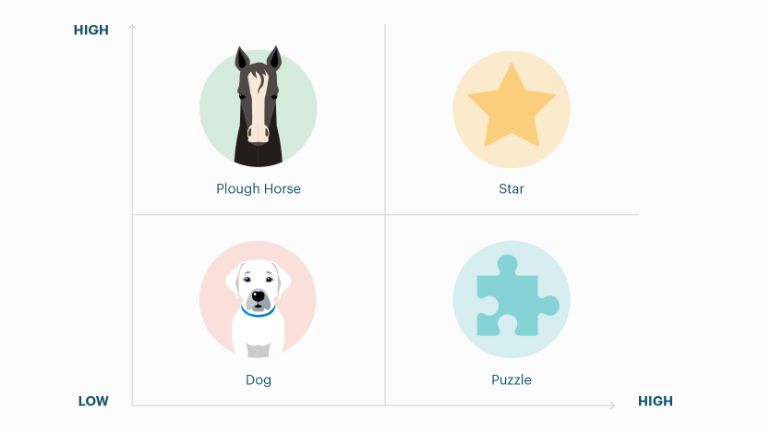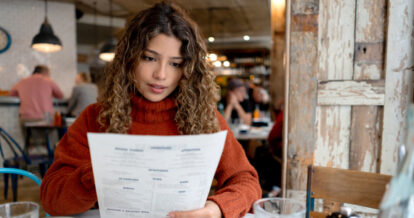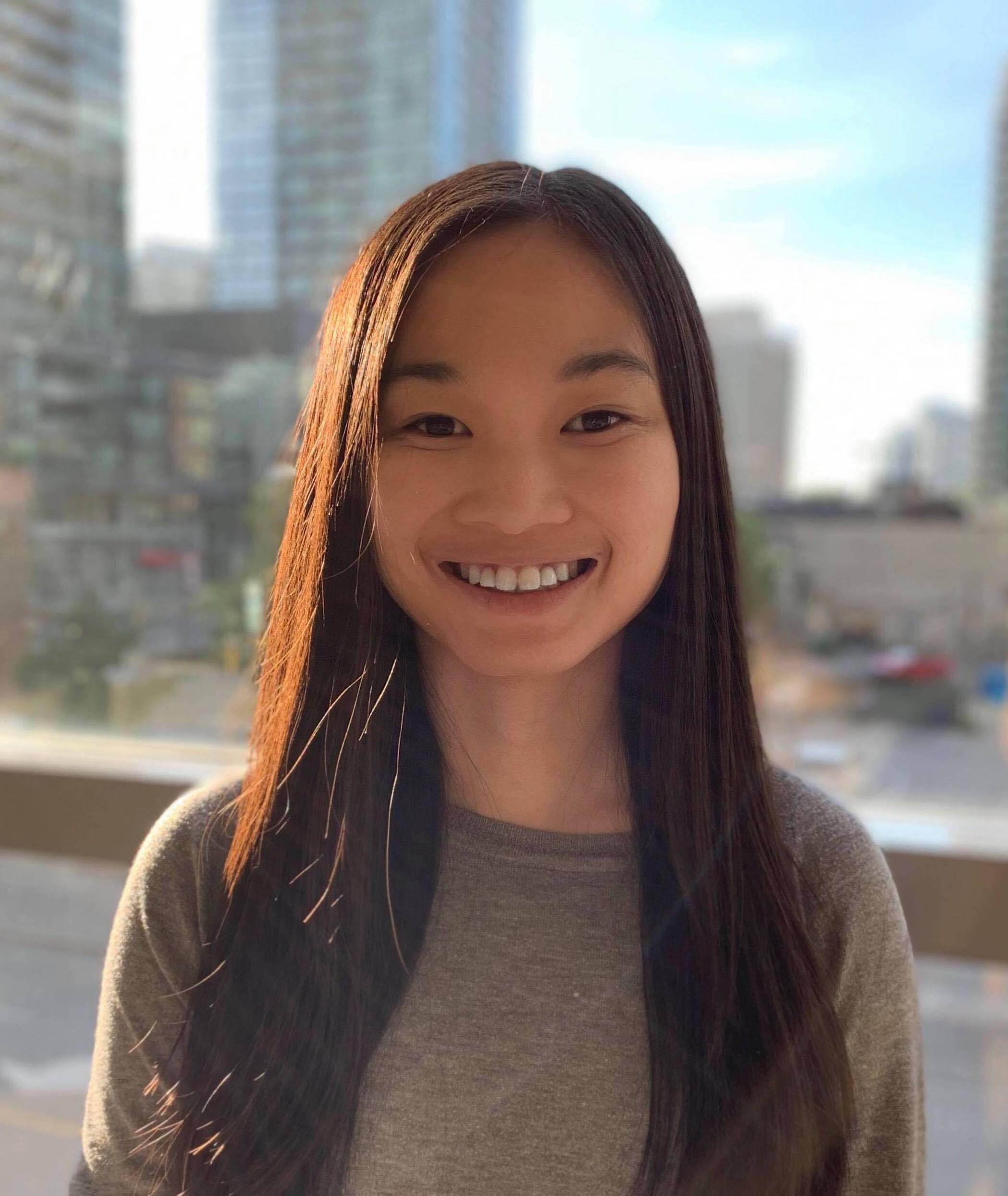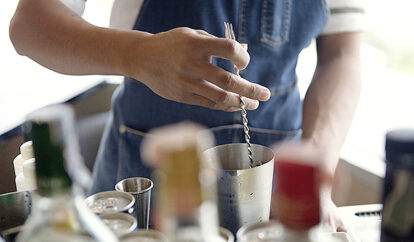The topic of inflation has become one of the most popular topics among restaurateurs as of late and there’s no doubt you’ve experienced the impact of rising food costs at your own venue. Menu engineering can help with your efforts to cut costs and find opportunities for profit gains by strategically tweaking your menu and its design.
In this article, we’ll discuss what menu engineering is and how psychology can help you maximize your restaurant’s profits. The topics we’ll cover include:
- A straightforward menu engineering definition
- An explanation of what the menu engineering matrix is
- The benefits of menu engineering
- Tips for menu engineering
Let’s get cracking on perfecting your menu!

Creating an eye-catching restaurant menu has never been easier thanks to these free restaurant menu templates.
What is Menu Engineering?
So, what is menu engineering? Menu engineering is a tactic used to analyze the popularity of menu items and use that data to maximize profit margins. By using both consumer psychology and profitability analysis it provides restaurateurs with strategic opportunities to improve their menu design. For example, it can help you determine what the ideal number of menu panels is, the price of each menu item, which of those menu items are featured, and much more.
What is the Goal of Menu Engineering?
The main objective of menu engineering is to use specific design tactics to optimize your menu design to strategically maximize your restaurant’s profitability. Through menu engineering, you can identify which items pull their weight and bring in healthy profits, and which ones are dead weight. As a result, you can adjust the design of your menu accordingly by highlighting your best performing menu items and phasing out those that take up space.
What is a Menu Engineering Matrix?
To help analyze and improve your current menu design, you can use a menu engineering matrix. A menu engineering matrix is a tool that can be used to help you as a restaurateur categorize your menu items based on popularity and profitability. There are four categories in a menu engineering matrix and they include: stars, plowhorses, puzzles, and dogs.
Let’s conduct a deeper dive into the menu engineering matrix, including what each category means and what you as a restaurateur should do to further improve your own menu design.

Stars: High Profitability, High Popularity
Stars are cream of the crop, which means they are inexpensive to make, popular among customers, and have high profit margins. These menu items need to be highlighted so that people order them more often, so you can maximize profits. There are ways that this can be done through menu engineering, such as featuring your stars at the top of your menu panel (a page in your menu), giving them appealing names, and including an enticing description for each.
For example, let’s say your steak has a high profit margin after you found a local supplier offering you a low cost per unit. What’s also great for you is that this item is a hit with guests and gets ordered frequently. Therefore, when designing your menu, highlight it as a featured item at the top of your menu, with an enticing description about where the steak is sourced from to encourage other guests to order it.
Do not experiment with items categorized as stars, as you risk customers skipping over these valuable menu items. Instead, promote each item well and take advantage of the luxury of having these profit-driving items on your menu.

Download this customizable template for you and your staff to use to protect the health and safety of your guests with food allergies.
Plowhorses: Low Profitability, High Popularity
Menu items that fall under plowhorses are tricky. Plowhorses are popular items, but they also struggle to achieve a high profit margin. If you have menu items falling under this category, consider doing a detailed breakdown of the recipe, including a list of each ingredient and its cost. Use it as an opportunity to look into cheaper suppliers for the same or similar ingredients to help decrease your restaurant’s costs and drive your profits.
Let’s say, your popular mushroom pasta dish is currently one of your best sellers, but the most expensive ingredient in that dish is the mushrooms. While delicious, it’s driving the cost per unit high, so now is your chance to search for a new supplier that could supply the mushrooms at a lower cost, without compromising the quality of the dish. Alternatively, you design your menu to pair the pasta with a higher profit margin drink or increase the price of the item on your menu to widen your margins.
Unlike items in the stars category, try experimenting with items in the plowhorse category to see how you can make the most of these dishes.
Puzzles: High Profitability, Low Popularity
Puzzles, as the category name suggests, are items that can lead to restaurateurs asking questions. Items that fall under this category are inexpensive to make, but are not popular among customers. Therefore, it raises the question, “how can I make these menu items more appealing?” These kinds of menu items are a great opportunity to put on your thinking cap and get creative to increase their popularity,
One solution is to design and feature a promotion on your menu around these items. Make these dishes stand out with bold text, appetizing images, and description worth reading. For instance, suppose you have a limited-time-only butternut squash soup listed on your menu. While it has a great profit margin, there hasn’t been a flurry of orders like you’d hoped. In this case, you might consider creating a special seasonal features section on your menu that features the butternut squash soup to draw more eyes and attention to it.
Dogs: Low Profitability, Low Popularity
Menu items categorized as dogs are not contributing to your restaurant’s profitability, because they are costly to make and are unpopular among your customers. It’s best to remove these items from your menu altogether and make room for other items, such as those categorized as stars.
For instance, if you’ve been trying out a new recipe for seafood chowder that consists of costly ingredients, but hasn’t been popular with the guests, it’s probably best to remove it from the menu and focus your efforts on other items instead.

Menu Engineering Tips for Restaurants
We’ve covered a lot already regarding the menu engineering definition, menu engineering matrix, and learned how each category plays a crucial role in deciding how to re-evaluate your menu design. Now, we’re one step closer to learning how to use restaurant menu engineering to maximize your profits.
To start applying this knowledge in your own restaurant, here are some essential tips, along with 5 important steps of the menu engineering process to improve your menu:
1. Choose a Specific Time Period to Measure
The first step in analyzing your menu design is to decide on a specific time period in which you want to tackle a redesign of your menu. A redesign can be done monthly, quarterly, semi-annually or yearly. It can also be done seasonally, if that makes sense for your venue. Due to menu engineering being a time consuming process, be mindful of your bandwidth and resources when deciding when to start the process.
2. Calculate and Determine Your Menu Costs and Popularity of Each Item
The next step is to figure out your costs for each of your menu offerings. Find out the food cost per serving by breaking down the recipe and each ingredient cost.
Here’s the food cost formula to identify the cost of each dish or item on your menu:
Total Cost of Dish = Cost of Ingredient 1 + Cost of Ingredient 2 + Cost of Ingredient 3
And here’s a simplified example of using the formula to calculate the food cost per serving:
Ingredient 1 = $10 per serving
Ingredient 2 = $2 per serving
Ingredient 3 = $3.75 per serving
Total Cost of Serving = $10 + $2 + $3.75 = $15.75
Now, we have the cost per serving, otherwise known as the cost of goods sold. With the cost of goods sold, your next step is to calculate the gross profit margin and the formula for that is:
(Selling Price – Cost of Goods) / Selling Price = Gross Profit
For simplicity, let’s assume this menu item is priced at $32. The gross profit in this example is:
(32 – 15.75) / 32 = 0.5078 x 100 = 50.8%
Simultaneously, you can turn to your restaurant menu management software to get specific data and analytics about how popular your menu items are. You can see how often an item is ordered over a specific period, to give you a good idea of what your guests are ordering and how frequently.

Creating an eye-catching restaurant menu has never been easier thanks to these free restaurant menu templates.
3. Categorize Your Menu Items
Once you have calculated your profit margins and determined the popularity level of each of your menu items, you can then place them into one of the four menu engineering matrix categories. As mentioned above, those include: stars, plowhorses, puzzles, and dogs.
If you need help visualizing each category and placing each of your menu items accordingly, try creating a graph with an x and y axis (popularity on the x axis and profitability on the y axis). Where each quadrant represents each of the four categories, so you can easily identify where each of your menu items fall. For instance, “stars” would be on the top right hand quadrant, since these items have high profitability and popularity.

4. Make Menu Adjustments
Next up is to take your existing menu and make updates to each item based on which category you assigned them to. There are several adjustments that can be made to significantly improve and/or update your menu items and the overall design of your menu, including:
- Removing menu items that are not profitable or popular with your guests
- Changing the price of menu items to increase your profit margins
- Removing the dollar sign and decimals for customers who are more price sensitive
- Featuring popular menu items by adding a star or bolding the item names
- Adding more enticing descriptors for each menu item
- Keeping in mind of guests eye movements when placing certain menu items
- Limiting the number of options to prevent guests from getting overwhelmed with too many choices
- Layout changes including the number of pages, otherwise known as the number of panels. The ideal number of menu panels is two panels if possible.
There are more ways, but this list gives you a good starting point to tackle the challenge of revamping your restaurant’s menu.

Download this customizable template for you and your staff to use to protect the health and safety of your guests with food allergies.
5. Track Menu Performance and Analyze Your Success
The final step, and arguably one of the most exciting parts of any menu update, is to see if the work you and your team have done has actually paid off. Thankfully, you don’t have to guess if it worked or not, as you can use your back of office software to help. Your POS and back office software can pull reports to analyze the food sales of each item and see how often each one was ordered during a specific period. It can also break down the costs of each item, as well as how much an item contributes to the sales.
Don’t feel discouraged if the changes you made aren’t driving the results you were looking for. It’s all about testing, implementing, and analyzing until you’re happy with the end result.

What are the Benefits of Menu Engineering?
Now that we’ve covered the process of menu engineering, let’s talk about the wonders it can do for your restaurant and those include:
1. Healthier Profit Margins
Cultivating healthier profit margins is a huge contributing factor to your restaurant’s overall revenue. So, how does menu engineering create healthier profit margins?
By constantly reevaluating the recipe cost and performance of each menu item, you can make decisions that widen profit margins over time. And by using strategic menu engineering tricks to highlight these items on your menu, you can also boost sales of those dishes that drive the biggest profits for your restaurants. Overall, these tactics can result in as much as a 10-15% increase in profits.
2. Improved Cost Management
Menu engineering can help restaurant operators better understand the cost of each dish and make adjustments to ensure they’re keeping food costs down. This is especially beneficial during times of high inflation, when consumers and restaurant operators alike, are experiencing rising food costs.
There are several ways to improve food costs when it comes to your menu, such as adjusting the pricing for the menu item, reworking the recipe entirely, or removing the item altogether to improve profitability.

Creating an eye-catching restaurant menu has never been easier thanks to these free restaurant menu templates.
3. Reduced Food Waste
An area that’s often overlooked due to the fast pace of restaurants is food waste. Well, with menu engineering, you can optimize your menu design and reduce food waste simultaneously. It also assists with portion management, such as cutting down on pre-consumer waste, which is the waste before it reaches the customers table, as well as post-consumer waste, which is the waste after it reaches the customers table.
An example of this is to engineer your menu and include half and full portions to prevent post-consumer food waste. This way, your business can be well on its way to becoming more sustainable. Your restaurant and the environment are both winning!
4. Keeps Your Menu Fresh
As much as people like to know what to expect when they dine-in your restaurant, it’s also important to keep your menu fresh and exciting for customers by providing new offerings. Menu engineering allows you to explore and experiment to come up with the best menu in terms of both cost and popularity.
By keeping your menu fresh with new ingredients or seasonally appealing dishes, you can drive excitement for your restaurant and encourage repeat visits.

Download this customizable template for you and your staff to use to protect the health and safety of your guests with food allergies.
5. Improved Customer Experience
Menu engineering can help make a positive impression with your guests the moment they pick up your menu after being seated. For example, having the popular items clearly identified can make the choice easier for guests by placing a star icon, not presenting them with too many choices, and considering their eye movements when placing certain items on the menu.
Remember, to also optimize your POS’ menu design to enhance the customer’s experience, such as having the categories conveniently listed for your servers. These menu changes can drastically improve the speed and quality of service from the get-go!
Who knew that menu psychology could play a crucial role in how well your restaurant performs? Now hopefully you do, and you’re better equipped to create the menu of your dreams and see your restaurant’s profitability soar!
Download our free inventory template
Sign up for our free weekly TouchBistro Newsletter







